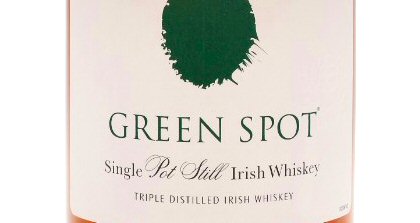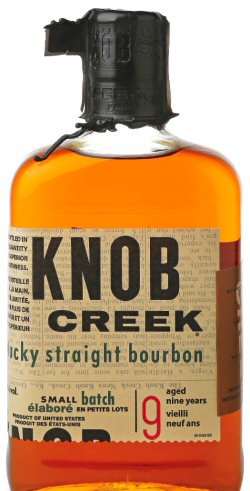Box Whisky – Festival 2016

The latest Festival bottling from Box distillery – a relatively young “craft” malt whisky distillery from Northern Sweden that I recently introduced in my Box 2nd Step Collection 02 review. Check out that review for more information about this distillery, including their interesting approach to cask management.
Box has organized an annual whisky festival for the last ten years, with a distinctive festival-only bottling since 2014. As I understand it from their website, these bottlings are true limited editions that can only be acquired by actually visiting the festival. The Festival editions are meant to showcase the character and quality of the distillery – but at the same time, provide a unique bottling that stands out in some way. My sample of the most recent Festival bottling comes from Thomas Øhrbom of Whisky Saga.
As usual, the Box website has a full breakdown of the cask and whisky mix that went into this 2016 Festival edition. Scroll down that page to see the 2016 specs (in Swedish only at the moment – it seems the English-language website version hasn’t caught up to this 2016 edition). But to summarize, this is an unpeated 5 year old whisky. The total production run produced 1012 official 50 cL bottles, with an additional 385 “non-official” bottles used at the festival for tastings. Bottled at 53.9% ABV.
The most interesting thing to me is that it was initially matured in 200 L ex-bourbon barrels, then finished for 7 months in heavily charred 40 L virgin Swedish oak casks (having undergone medium toasting before charring). It’s not often one gets to sample something matured in Swedish oak around here (outside of a small proportion of Mackmyra’s malt whisky mix).
I don’t have enough reviews of this edition to include in my Meta-Critic Database, but here are how some other Swedish whiskies do:
Box The 2nd Step Collection 02: 8.92 ± 0.06 on 3 reviews ($$$$)
Box The Festival 2014: 8.95 ± 0.14 on 3 reviews ($$$$$)
Mackmyra Brukswhisky: 8.43 ± 0.62 on 9 reviews ($$$)
Mackmyra Midnattssol: 8.14 ± 0.71 on 5 reviews ($$$$)
Mackmyra Moment Glöd: 9.03 ± 0.23 on 3 reviews ($$$$$)
Mackmyra Special 03: 8.69 ± 0.28 on 7 reviews ($$$$$)
Mackmyra Special 04: 8.75 ± 0.36 on 8 reviews ($$$$)
Mackmyra Special 05: 8.50 ± 0.38 on 7 reviews ($$$$)
Mackmyra Svensk Rök: 8.72 ± 0.14 on 4 reviews ($$$$)
Mackmyra The First Edition (Den Första Utgåvan): 8.64 ± 0.37 on 17 reviews ($$$)
Smögen Primör: 8.51 ± 0.24 on 4 reviews ($$$$$)
Spirit of Hven Sankt Claus: 8.60 ± 0.58 on 3 reviews ($$$$$)
Spirit of Hven Seven Stars No. 3 Phecda: 8.53 ± 0.34 on 3 reviews ($$$$$)
Spirit of Hven Tycho’s Star: 8.58 ± 0.06 on 3 reviews ($$$$)
Obviously this Festival-specific bottling is not something you will be able to obtain now, but I thought you might find my tasting notes interesting – as an example of what to expect from this distinctive Swedish oak finishing.
Colour: Reddish golden hue
Nose: Sweet red fruits – plums, currants, and cherries. Chocolate, cinnamon, and chilli peppers. Leather and toasted oak. Quite a sweet and spicy nose – I’m getting a lot of virgin wood notes, almost bourbon-like in fact (i.e., a medium-aged wheater). A confectionery note I can’t quite place – something you would eat on a fairground. No off notes really, despite the young age.
Palate: Holy cow, what a liquid confection – a melted caramilk bar! Sweet, oily and rich. Tons of butterscotch, caramel and chocolate. Turns more malty towards the end (liquefied Malted Milk bar?). Cinnamon, pepper and dried chilli notes return after the initial blast of sweet nougat. I would not have guessed this was 53.9% ABV – surprisingly easy to drink neat.
Finish: Medium short. The sweet notes dominate initially, but then some oaky bitterness creeps in. Also a bit astringent (drying) in the mouth. Cinnamon and chilli spiciness lasts until the end.
 Not as much going on as the 2nd Step Collection 02 (i.e., not as complex) – but still a fabulous dessert whisky. Water doesn’t change much on the nose, but oddly seems to increase the heat in the mouth (?).
Not as much going on as the 2nd Step Collection 02 (i.e., not as complex) – but still a fabulous dessert whisky. Water doesn’t change much on the nose, but oddly seems to increase the heat in the mouth (?).
It is a wild ride – I don’t know if all this spiciness is coming the small cask Swedish oak, but it is not like anything I’ve had before. Probably the closest thing in my experience would be a mix of W.L. Weller 12 yo and some of the 66 Gilead products in Canada (like Crimson Rye, although with a lot more chocolate and less cinnamon here).
A hard one to score, I would probably give it a slightly above average rating for its distinctiveness (and surprising maturity, despite the young stated age). So, I would say an 8.6 on my typical Database scale of 10.
You aren’t going to find many reviews of this one online, but you can check out Thomas of Whisky Saga. Whiskybase also has a few scores.



 Ok, I would never have guessed that the majority of casks going into this whisky were between 4.7 and 5.2 years old. The complexity on the nose and finish suggests a much longer aging. It seems their cask management and extreme temperature variation is having the desired effect. And I suspect the small amount of peated whisky in the mix is deliberate, to help balance out the flavours (and hide some of the signs of youth).
Ok, I would never have guessed that the majority of casks going into this whisky were between 4.7 and 5.2 years old. The complexity on the nose and finish suggests a much longer aging. It seems their cask management and extreme temperature variation is having the desired effect. And I suspect the small amount of peated whisky in the mix is deliberate, to help balance out the flavours (and hide some of the signs of youth).
 Finish: Medium long. The smoke is back. There’s a salty sweetness that lingers, like bacon coated in maple syrup. Some astringency comes in at the end (i.e., a bit drying).
Finish: Medium long. The smoke is back. There’s a salty sweetness that lingers, like bacon coated in maple syrup. Some astringency comes in at the end (i.e., a bit drying).
 Finish: Medium. The artificial sweetener turns into more natural molasses (which is actually a positive). A bit of sourness comes in at the end, but not offensive. Some mild baking spices show up now as well (touch of cinnamon).
Finish: Medium. The artificial sweetener turns into more natural molasses (which is actually a positive). A bit of sourness comes in at the end, but not offensive. Some mild baking spices show up now as well (touch of cinnamon).
 Frankly, I would not have immediately pegged this as a blend – it seems malt-heavy (although the higher strength may be contributing to that perception). This one really needs a little water (and I emphasize, little) to open up all the flavours and tame the ethanol burn.
Frankly, I would not have immediately pegged this as a blend – it seems malt-heavy (although the higher strength may be contributing to that perception). This one really needs a little water (and I emphasize, little) to open up all the flavours and tame the ethanol burn.
 As you can see above, this Islay is actually the highest ranked member of the McClelland’s family – although all are ranked well below the official bottlings from the (presumed) source distilleries. I would personally score the McClelland’s Islay lower than the Meta-Critic average.
As you can see above, this Islay is actually the highest ranked member of the McClelland’s family – although all are ranked well below the official bottlings from the (presumed) source distilleries. I would personally score the McClelland’s Islay lower than the Meta-Critic average.


 Finish: Medium. “Soft” is really the best way to describe this whisky. Although there is a touch of bitterness associated with the wood, these are not offensive. A throat lozenge sweetened with honey and lemon might describe this well – makes me think of a high-end cold remedy!
Finish: Medium. “Soft” is really the best way to describe this whisky. Although there is a touch of bitterness associated with the wood, these are not offensive. A throat lozenge sweetened with honey and lemon might describe this well – makes me think of a high-end cold remedy!
 Standard Knob Creek gets a good score for the price in this class of bourbons.
Standard Knob Creek gets a good score for the price in this class of bourbons. Surprisingly easy to drink neat, despite the slightly sour/dry aspect. Quite a respectable bourbon, especially for the price. I would put it on par with Elijah Craig in terms of quality, although it is perhaps a touch less flavourful. Personally, I still prefer the Buffalo Trace/Eagle Rare/Stagg juice (the latter two are under-rated in the Meta-Critic database, in my view).
Surprisingly easy to drink neat, despite the slightly sour/dry aspect. Quite a respectable bourbon, especially for the price. I would put it on par with Elijah Craig in terms of quality, although it is perhaps a touch less flavourful. Personally, I still prefer the Buffalo Trace/Eagle Rare/Stagg juice (the latter two are under-rated in the Meta-Critic database, in my view).
 Water doesn’t really bring up anything new on this one. Despite the high ABV, I recommend you try it neat first, and then add any water as you feel is necessary.
Water doesn’t really bring up anything new on this one. Despite the high ABV, I recommend you try it neat first, and then add any water as you feel is necessary.